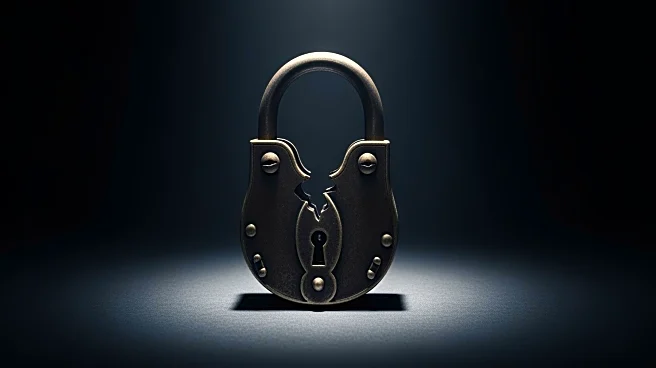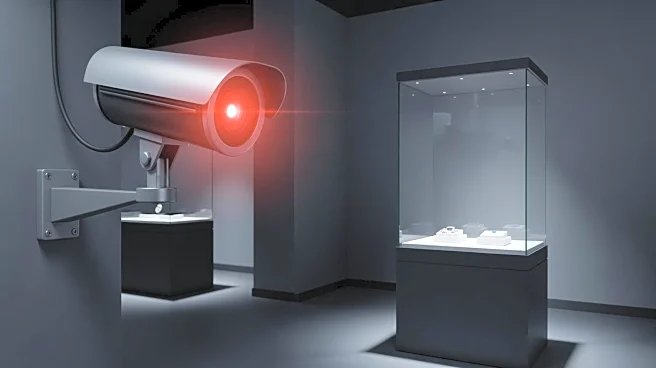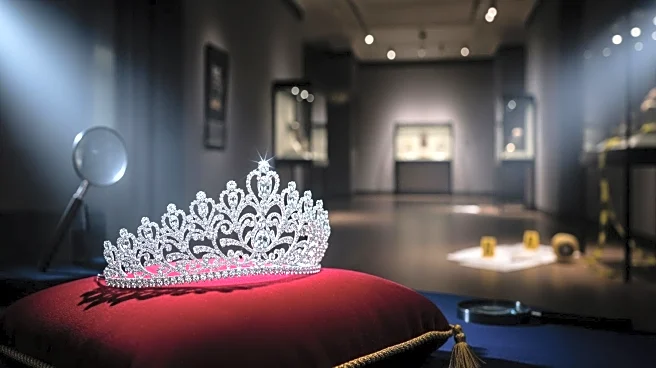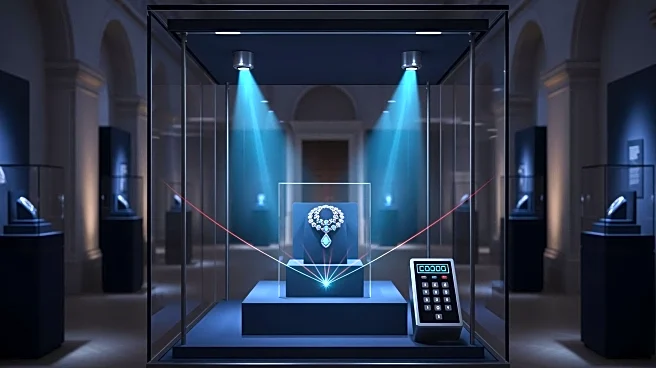What's Happening?
French authorities have arrested two suspects in connection with the recent heist at the Louvre Museum in Paris, where thieves stole jewels valued at approximately $102 million. The theft involved a daring
operation where the suspects used a lift to access the museum, smashed display cases, and made off with eight valuable items. The suspects were apprehended with the help of DNA analysis, CCTV footage, and phone tracking. The investigation is ongoing, with over 100 officers involved, and the suspects are being held for questioning. The incident has sparked a debate over the museum's security measures, with the Louvre's director facing scrutiny over delays in implementing security upgrades.
Why It's Important?
The heist at the Louvre, one of the world's most famous museums, highlights significant security vulnerabilities in cultural institutions. The theft of such high-value items not only represents a substantial financial loss but also a cultural one, as these jewels are part of France's national heritage. The incident has prompted a broader review of museum security across France, which could lead to increased funding and stricter security protocols. The arrests demonstrate the effectiveness of modern investigative techniques, but the case also underscores the challenges of protecting cultural assets in an era of sophisticated criminal operations.
What's Next?
As the investigation continues, French authorities are expected to release more details once the suspects' custody period ends. The government has announced a comprehensive review of museum security, which may result in policy changes and increased funding for security infrastructure. The Louvre's director has promised significant investments in security upgrades, but the funding and timeline for these improvements remain uncertain. The case may also lead to international cooperation in tracking and recovering stolen cultural artifacts.
Beyond the Headlines
The Louvre heist raises questions about the balance between public access to cultural treasures and the need for security. The incident may prompt a reevaluation of how museums worldwide protect their collections, potentially leading to more restricted access or increased surveillance. Additionally, the case highlights the ethical considerations of privacy and the presumption of innocence in criminal investigations, as French law prohibits the public release of suspect images and details.











